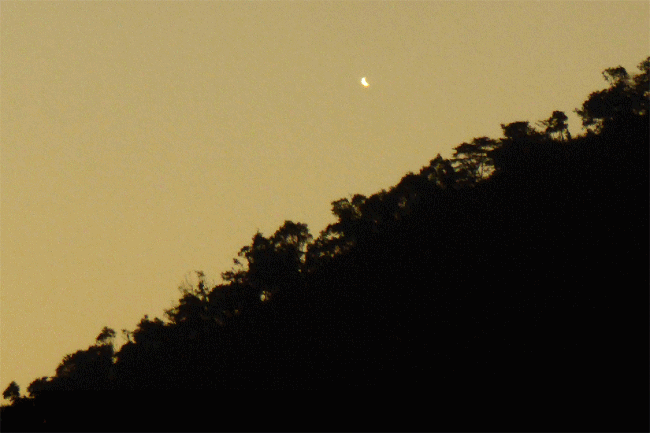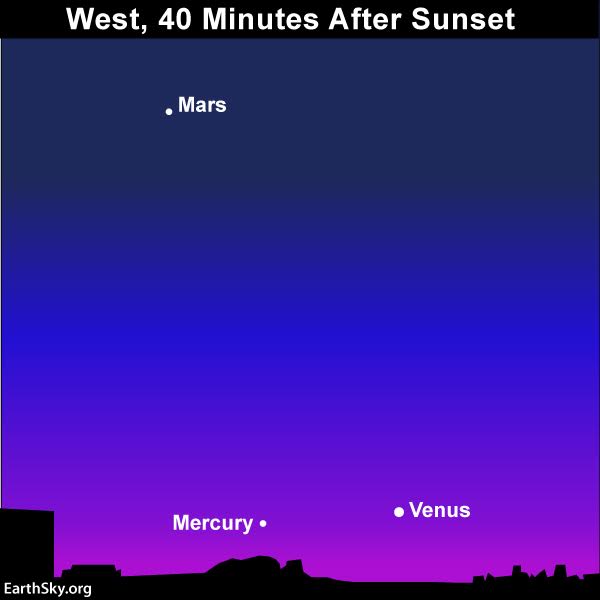Tonight – March 18, 2017 – and for the next few evenings, you might be able to catch the departing planet Venus. And you might be able to catch Mercury, now entering the evening sky, about to stage its best apparition of 2017 for northern observers.
The appearance of the planets Venus and Mercury in our western twilight is fleeting. They’ll set shortly after the sun. They’ll be easier to spot from the Northern Hemisphere than at comparable latitudes in the Southern Hemisphere. However, no matter where you live worldwide, it’ll be a challenge to catch these two worlds – especially Mercury – at dusk. Be sure to find an unobstructed horizon in the direction of sunset and then seek these planets near the sunset point on the horizon some 30 to 45 minutes after sunset.
Day by day, Mercury will climb upward from the setting sun whereas Venus will fall sunward, to pass in between the Earth and sun on March 25. By the month’s end, Venus will have left the evening sky while Mercury will be easily seen from Northern Hemisphere locations (less easy to see, but still possible, from the southern half of Earth’s globe).
If you could see Venus through a telescope now, you’d find it in a crescent phase. Click here for a gallery of photos of crescent Venus.

Venus is the third-brightest heavenly body after the sun and moon. It’ll be the first starlike object to pop out into the evening twilight. Given a clear sky, extremely sharp-sighted people might see this brilliant world as soon as a few minutes after sunset. The rest of us have to wait until 20 to 30 minutes after sundown before seeing Venus quite low in the western dusk.
Although Venus outshines Mercury by some 14 times, Mercury is quite bright in its own right. In fact, Mercury is nearly as brilliant as Sirius, the brightest star of the nighttime sky.
Both Mercury and Venus set in the west before nightfall, so their luster is somewhat tarnished by the glow of evening twilight. But it’s fun to see these bright worlds. Their brightness – especially Venus’ brightness – against the bright twilight sky will surprise you!
Mercury is about 12 times brighter than the red planet Mars, which is also in the evening sky and – despite being fainter – is a much more reliable object to spot this evening. That’s because Mars stays out until after nightfall, setting in the west around mid-evening at northern temperate latitudes (or at early evening at southern temperate latitudes).
Click here to find a recommended sky almanac; an almanac can tell you the setting times for sun, Mercury, Venus and Mars in your sky.
Two other planets are also in view in the March 2017 night sky. At early-to-mid evening, look eastward to see the sky’s second brightest planet after Venus: Jupiter. It’s ascending as (or after) Venus is descending, a wonderful counterbalance in the sky. And if you’re up early on March 19, use the moon to help guide you to the ringed planet Saturn in the morning sky. See the charts below.


Bottom line: On March 18, 2017, Venus is leaving the evening sky, while Mercury is climbing into it. By late March, Venus will have moved to the east before dawn while Mercury will be staging its best evening apparition of the year for northern observers.












